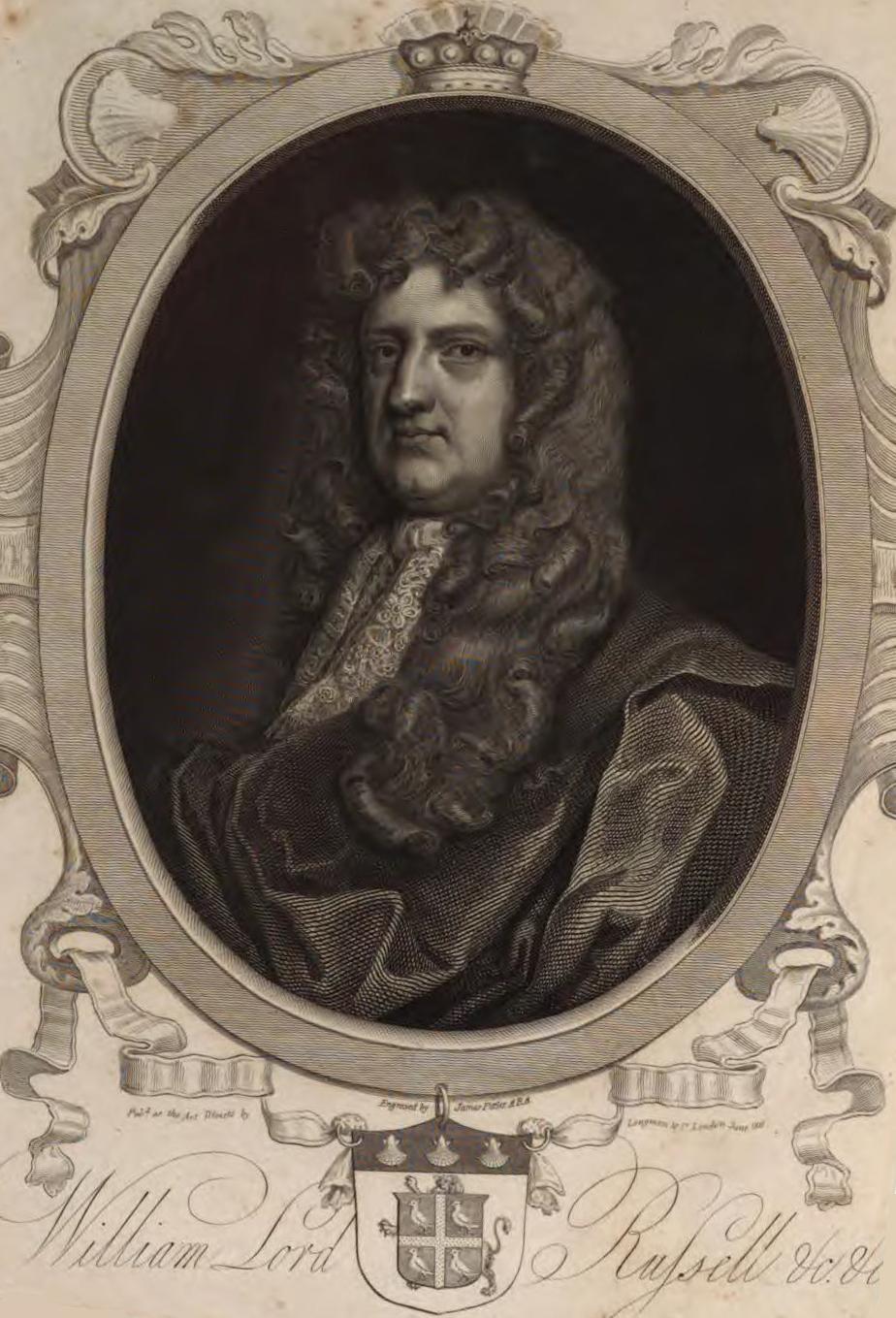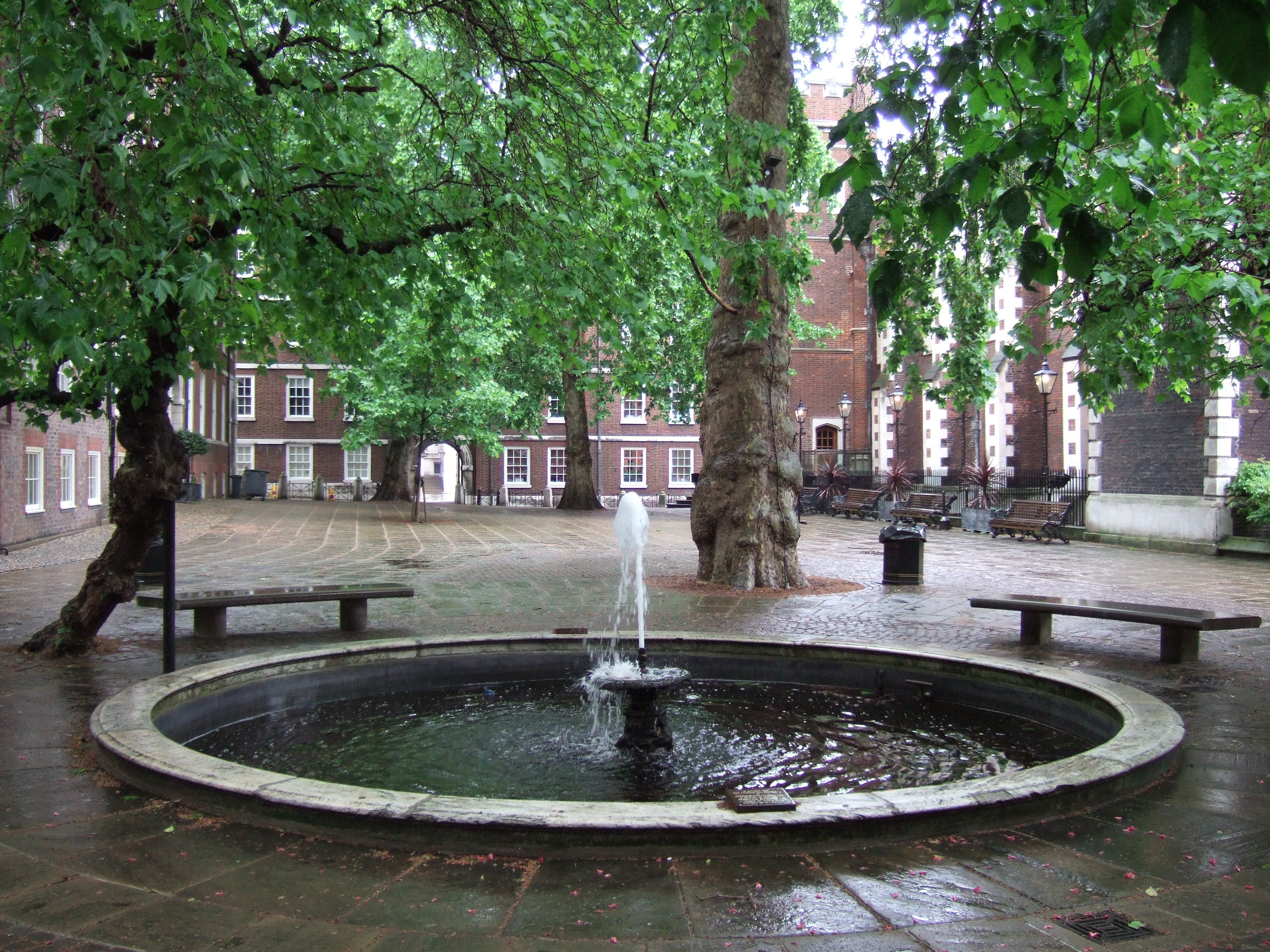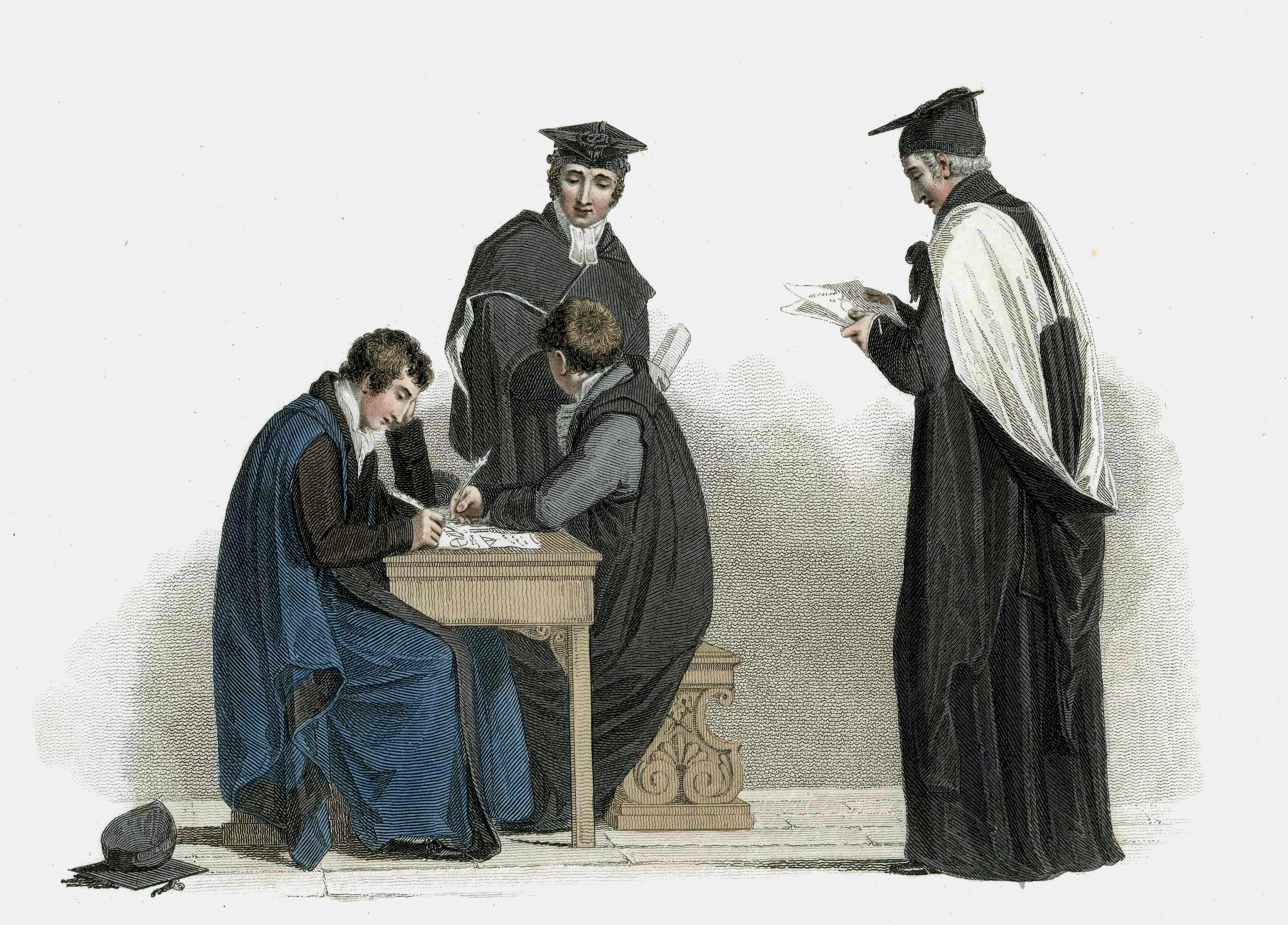|
John Somers, 1st Baron Somers
John Somers, 1st Baron Somers, (4 March 1651 – 26 April 1716) was an English jurist, Whig statesman and peer. Somers first came to national attention in the trial of the Seven Bishops where he was on their defence counsel. He published tracts on political topics such as the succession to the crown, where he elaborated his Whig principles in support of the Exclusionists. He played a leading part in shaping the Revolution settlement. He was Lord High Chancellor of England under King William III and was a chief architect of the union between England and Scotland achieved in 1707 and the Protestant succession achieved in 1714. He was a leading Whig during the twenty-five years after 1688; with four colleagues he formed the Whig Junto. Early life He was born at Claines, near Worcester, the eldest son of John Somers, an attorney in a large practice in that town, who had formerly fought on the side of the Parliament, and of Catherine Ceaverne of Shropshire. After being at schoo ... [...More Info...] [...Related Items...] OR: [Wikipedia] [Google] [Baidu] |
The Right Honourable
''The Right Honourable'' (abbreviation: The Rt Hon. or variations) is an honorific Style (form of address), style traditionally applied to certain persons and collective bodies in the United Kingdom, the former British Empire, and the Commonwealth of Nations. The term is predominantly used today as a style associated with the holding of certain senior public offices in the United Kingdom, Canada, New Zealand, and, to a lesser extent, Australia. ''Right'' in this context is an adverb meaning 'very' or 'fully'. Grammatically, ''The Right Honourable'' is an adjectival phrase which gives information about a person. As such, it is not considered correct to apply it in direct address, nor to use it on its own as a title in place of a name; but rather it is used in the Grammatical person, third person along with a name or noun to be modified. ''Right'' may be abbreviated to ''Rt'', and ''Honourable'' to ''Hon.'', or both. ''The'' is sometimes dropped in written abbreviated form, but is ... [...More Info...] [...Related Items...] OR: [Wikipedia] [Google] [Baidu] |
Exclusion Crisis
The Exclusion Crisis ran from 1679 until 1681 in the reign of King Charles II of England, Scotland and Ireland. Three Exclusion Bills sought to exclude the King's brother and heir presumptive, James, Duke of York, from the thrones of England, Scotland and Ireland because he was a Roman Catholic. None became law. Two new parties formed. The Tories were opposed to this exclusion, while the "Country Party", who were soon to be called the Whigs, supported it. While the matter of James's exclusion was not decided in Parliament during Charles's reign, it would come to a head only three years after James took the throne, when he was deposed in the Glorious Revolution of 1688. Finally, the Act of Settlement 1701 decided definitively that Roman Catholics were to be excluded from the English, Scottish, and Irish thrones, later the British throne. Background In 1673, when the Duke of York refused to take the oath prescribed by the new Test Act, it became publicly known that he was a ... [...More Info...] [...Related Items...] OR: [Wikipedia] [Google] [Baidu] |
Exclusion Bill
The Exclusion Crisis ran from 1679 until 1681 in the reign of King Charles II of England, Scotland and Ireland. Three Exclusion Bills sought to exclude the King's brother and heir presumptive, James, Duke of York, from the thrones of England, Scotland and Ireland because he was a Roman Catholic. None became law. Two new parties formed. The Tories were opposed to this exclusion, while the "Country Party", who were soon to be called the Whigs, supported it. While the matter of James's exclusion was not decided in Parliament during Charles's reign, it would come to a head only three years after James took the throne, when he was deposed in the Glorious Revolution of 1688. Finally, the Act of Settlement 1701 decided definitively that Roman Catholics were to be excluded from the English, Scottish, and Irish thrones, later the British throne. Background In 1673, when the Duke of York refused to take the oath prescribed by the new Test Act, it became publicly known that he was a R ... [...More Info...] [...Related Items...] OR: [Wikipedia] [Google] [Baidu] |
Algernon Sidney
Algernon Sidney or Sydney (15 January 1623 – 7 December 1683) was an English politician, republican political theorist and colonel. A member of the middle part of the Long Parliament and commissioner of the trial of King Charles I of England, he opposed the king's execution. Sidney was later charged with plotting against Charles II, in part based on his most famous work, '' Discourses Concerning Government'', which was used by the prosecution as a witness at his trial. He was executed for treason. After his death, Sidney was revered as a "Whig patriot—hero and martyr". The works of Algernon Sidney, along with those of contemporary John Locke, are considered a cornerstone of western thought. ''Discourses Concerning Government'' cost Sidney his life. However, the ideas it put forth survived and ultimately culminated in the Glorious Revolution in England and the founding of the United States. Sidney directly opposed the theory of divine right of kings by suggesting ideas su ... [...More Info...] [...Related Items...] OR: [Wikipedia] [Google] [Baidu] |
William Russell, Lord Russell
William Russell, Lord Russell (29 September 163921 July 1683) was an English Country Party politician and nobleman. He was a leading member of the Country Party, forerunners of the Whigs, who during the reign of Charles II of England laid the groundwork for opposition in the English House of Commons to the accession of an openly Catholic monarch in Charles's brother James. This ultimately resulted in Russell's execution for treason, almost two years before Charles died and James acceded to the throne. Early life and marriage Born Hon. William Russell, he was the third son of William Russell, 5th Earl of Bedford, later created Duke of Bedford, and Lady Anne Carr. After the death of his elder brother Francis, he gained the courtesy title of Baron Russell and was thus referred to as Lord Russell. He and Francis were at Cambridge University in 1654. They then travelled abroad, visiting Lyon and Geneva, residing for a time at Augsburg. Russell's account makes for a colourful d ... [...More Info...] [...Related Items...] OR: [Wikipedia] [Google] [Baidu] |
Arthur Capell, 1st Earl Of Essex
Arthur Capell, 1st Earl of Essex (13 July 1683), also spelt Capel, of Cassiobury House, Watford, Hertfordshire, was an English statesman. Early life He was the son of Arthur Capell, 1st Baron Capell of Hadham (executed in 1649) by his wife Elizabeth Morrison, daughter and heiress of Sir Charles Morrison, 1st Baronet (1587–1628) of Cashiobury House, Watford, Hertfordshire. He was baptised on 2 January 1632. Youth In June 1648, then a sickly boy of sixteen, he was taken by Lord Fairfax's soldiers from Hadham to Colchester in Essex, which town his father was defending, and was carried every day around the works with the hope of inducing Lord Capell to surrender the town. Political career At the Restoration of the Monarchy, he was created on 20 April 1661 Viscount Malden and Earl of Essex, the latter earldom having become extinct on the death of Robert Devereux, 3rd Earl of Essex. It was granted with special remainder to the male issue of his father. Capell was ... [...More Info...] [...Related Items...] OR: [Wikipedia] [Google] [Baidu] |
Middle Temple
The Honourable Society of the Middle Temple, commonly known simply as Middle Temple, is one of the four Inns of Court entitled to Call to the bar, call their members to the English Bar as barristers, the others being the Inner Temple (with which it shares Temple Church), Gray's Inn and Lincoln's Inn. It is located in the wider Temple, London, Temple area of London, near the Royal Courts of Justice, and within the City of London. As a Liberty (division), liberty, it functions largely as an independent local government authority. History During the 12th and early 13th centuries the law was taught, in the City of London, primarily by the clergy. But a papal bull in 1218 prohibited the clergy from practicing in the secular courts (where the English common law system operated, as opposed to the Roman Civil law (legal system), civil law favoured by the Church). As a result, law began to be practised and taught by laymen instead of by clerics. To protect their schools from competi ... [...More Info...] [...Related Items...] OR: [Wikipedia] [Google] [Baidu] |
Francis Winnington (Solicitor-General)
Sir Francis Winnington (7 November 1634 – 1 May 1700) was an English lawyer and politician who sat in the House of Commons at various times between 1677 and 1698. He became Solicitor-General to King Charles II. Biography Winnington entered the Middle Temple in 1656 and was called to the bar in 1660 and rose steadily, serving as counsel in various Parliamentary impeachments. In January 1672, he became attorney-general to the king's brother, the Duke of York and was knighted on 16 December 1672. He was appointed as Solicitor General in 1675 and chosen as MP for Windsor at a by-election to the Cavalier Parliament in 1677 on the King's recommendation. During the hysteria of the Popish Plot, Winnington's allegiances changed, and he participated in impeaching the Lord Danby. This led to his dismissal as Solicitor General. However he was elected as MP for Worcester in 1679 (twice) and again in 1681. While Parliament was not sitting, he defended political allies in the court a ... [...More Info...] [...Related Items...] OR: [Wikipedia] [Google] [Baidu] |
Gentleman Commoner
A commoner is a student at certain universities in the British Isles who historically pays for his own tuition and commons, typically contrasted with scholars and exhibitioners, who were given financial emoluments towards their fees. Cambridge Commoners were also known as pensioners at the University of Cambridge. Pensioners paid for their own tuition and commons. A fellow‑commoner was a rank of student above pensioners but below noblemen. They paid double the tuition fee and enjoyed more privileges than pensioners, such as commoning with fellows. As fellow‑commoners had considerable wealth, they were ineligible for scholarships and paid fellowships at some colleges. Fellow‑commoners who wore a hat instead of a velvet cap were known as hat fellow‑commoners. They were often sons of nobility but not the eldest, who enjoyed the rank of "noblemen". Today, a fellow‑commoner at Cambridge is one who enjoys access to the senior common room without a fellowship. Trinity Col ... [...More Info...] [...Related Items...] OR: [Wikipedia] [Google] [Baidu] |
The King's School, Worcester
The King's School, Worcester is a private co-educational day school refounded by Henry VIII in 1541. It occupies a site adjacent to Worcester Cathedral on the banks of the River Severn in the centre of the city of Worcester. It offers mixed-sex mainstream education that follows the UK National Curriculum to around 1,465 pupils aged 2 to 18. At age 11, approximately two thirds of pupils join the senior school from its two prep schools, King's Hawford and King's St Albans, while others come from maintained schools in the city of Worcester and the surrounding areas that include Malvern, Redditch, Kidderminster, Evesham and Pershore.ISI report October 2005 Retrieved 28 July 2009. Campuses The King's, Worcester group consists of three different schools. These include: *King's Hawford: (ages 2–11, pupils), ...[...More Info...] [...Related Items...] OR: [Wikipedia] [Google] [Baidu] |
Queen Mary's Grammar School, Walsall
Queen Mary's Grammar School (QMGS) is a boys' grammar school with academy status located on Sutton Road, Walsall, England, about a mile from the town centre and one of the oldest schools in the country. The sixth form is coeducational. Admissions Admittance to the school is by entrance exam taken at the age of 10/11. Since September 2020, 180 pupils enter the school in September each year, increased gradually from 96 in September 2012. The school has grown from 718 in 2011 to 1,305 in 2022, as a consequence of this sustained expansion. There is separate admission into the Sixth Form based on academic performance at GCSE (Where you require a minimum score of 54 points from your GCSEs as well as at least a 7 in your chosen subjects). As of 2019, there are over 400 students on roll in the Sixth Form. At this stage of the school, girls are also admitted. History Foundation It was founded in 1554 by George and Nicolas Hawe, two leading townsmen, with Queen Mary I as its royal p ... [...More Info...] [...Related Items...] OR: [Wikipedia] [Google] [Baidu] |
Shropshire
Shropshire (; abbreviated SalopAlso used officially as the name of the county from 1974–1980. The demonym for inhabitants of the county "Salopian" derives from this name.) is a Ceremonial counties of England, ceremonial county in the West Midlands (region), West Midlands of England, on the England–Wales border, border with Wales. It is bordered by Cheshire to the north-east, Staffordshire to the east, Worcestershire to the south-east, Herefordshire to the south, and the Welsh principal areas of Powys and Wrexham County Borough, Wrexham to the west and north-west respectively. The largest settlement is Telford, while Shrewsbury is the county town. The county has an area of and a population of 498,073. Telford in the east and Shrewsbury in the centre are the largest towns. Shropshire is otherwise rural, and contains market towns such as Oswestry in the north-west, Market Drayton in the north-east, Bridgnorth in the south-east, and Ludlow in the south. For Local government i ... [...More Info...] [...Related Items...] OR: [Wikipedia] [Google] [Baidu] |






